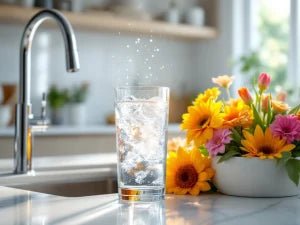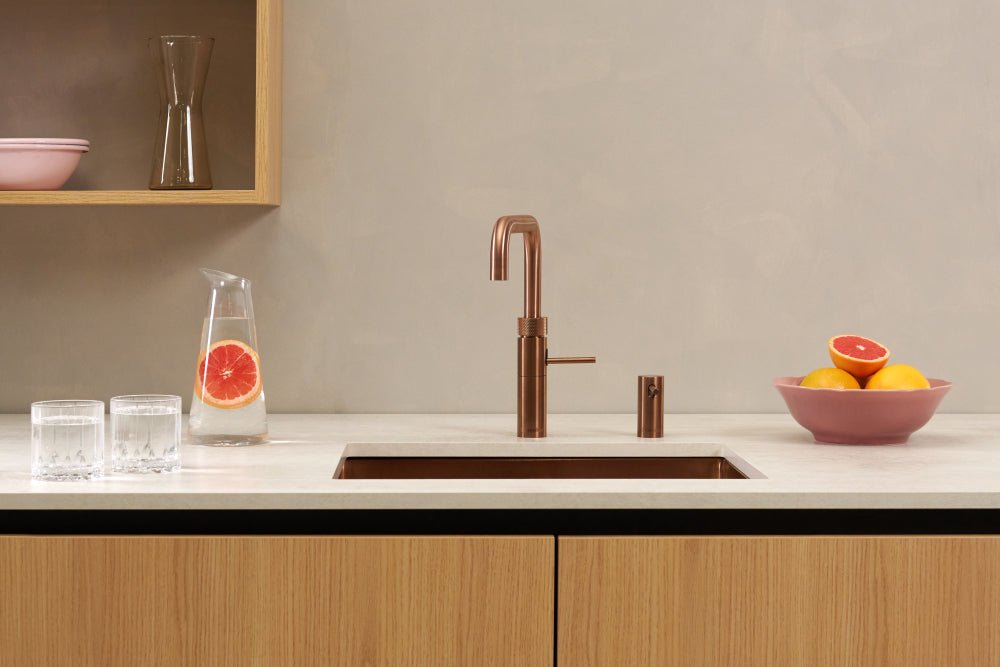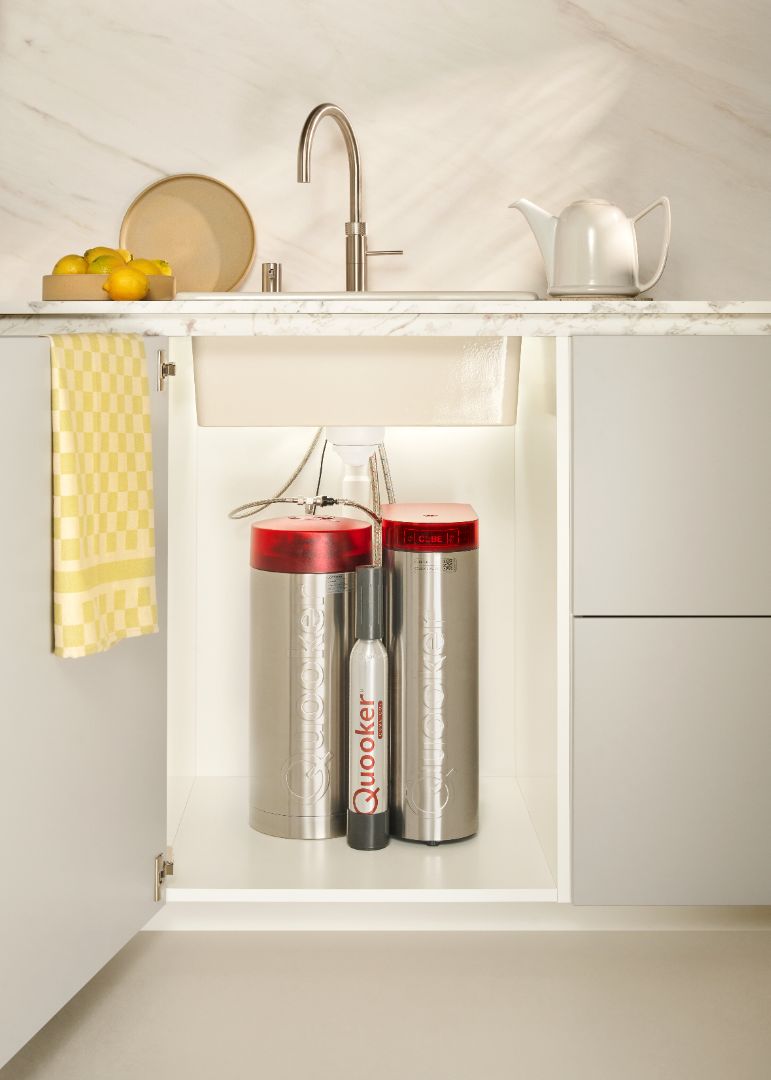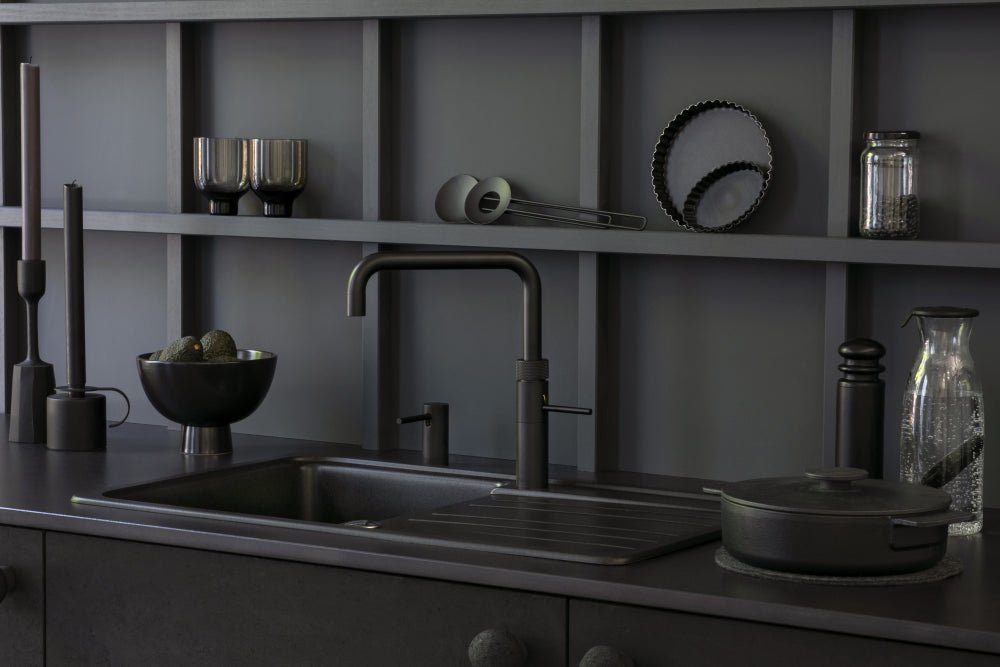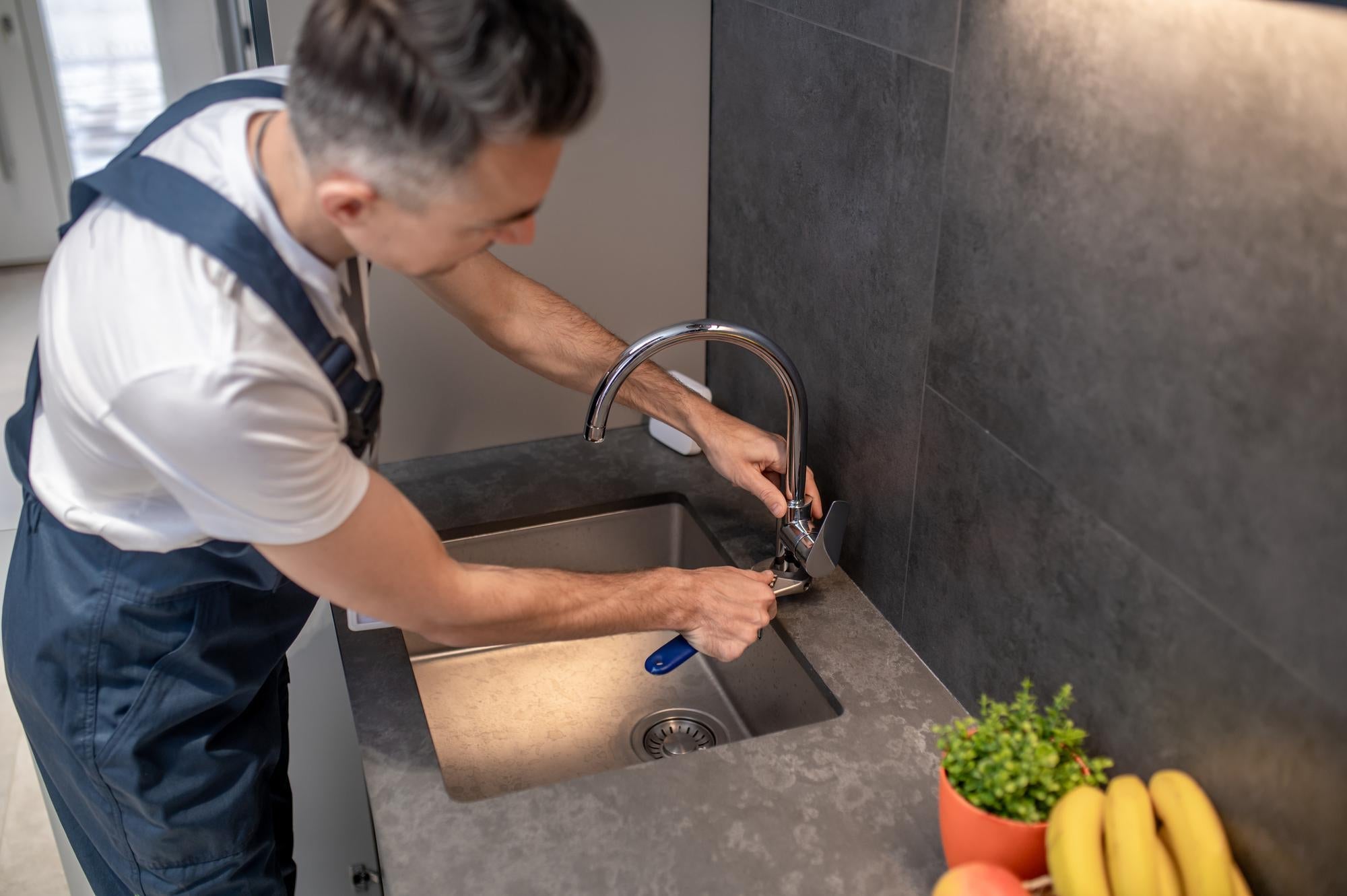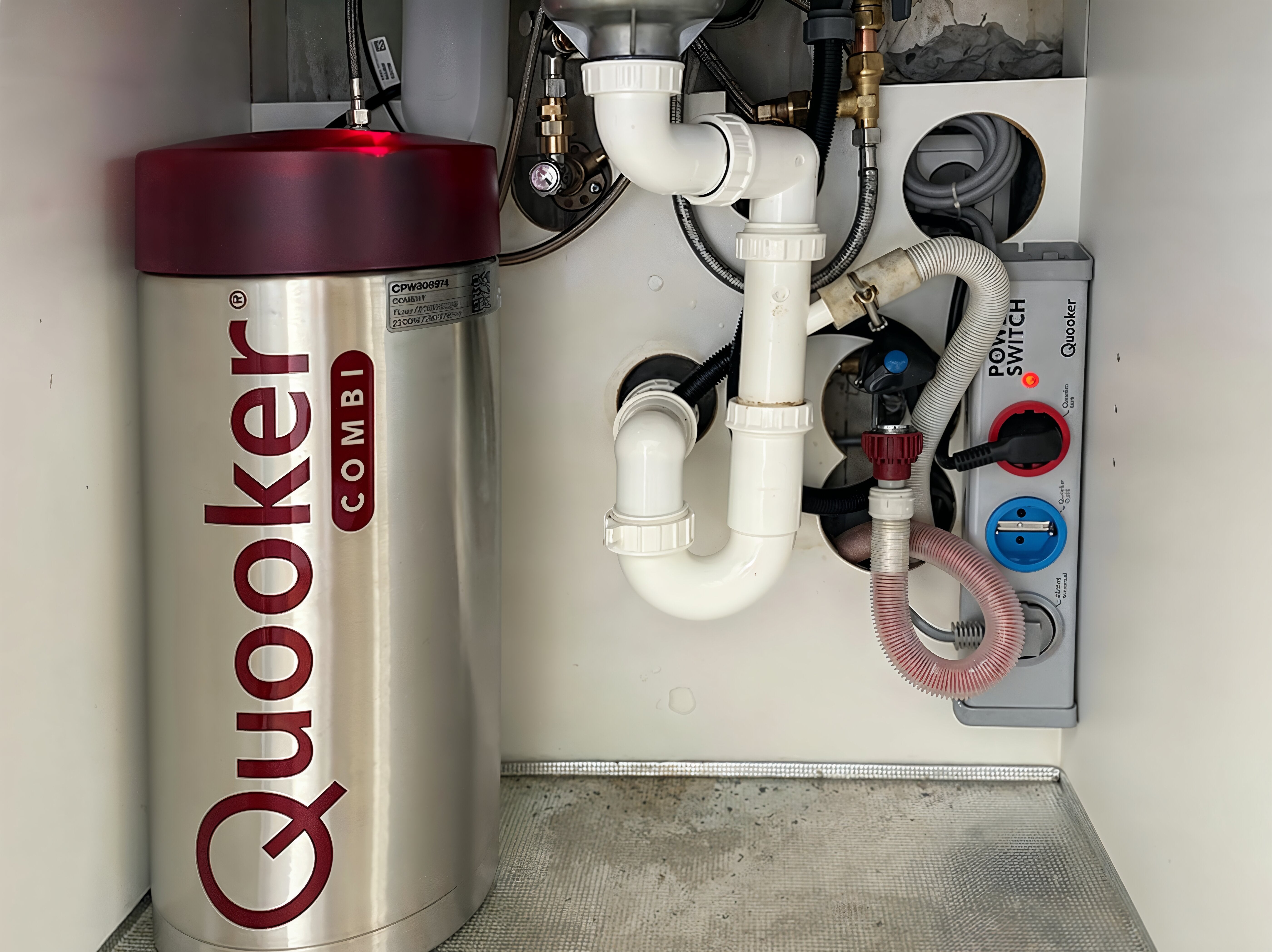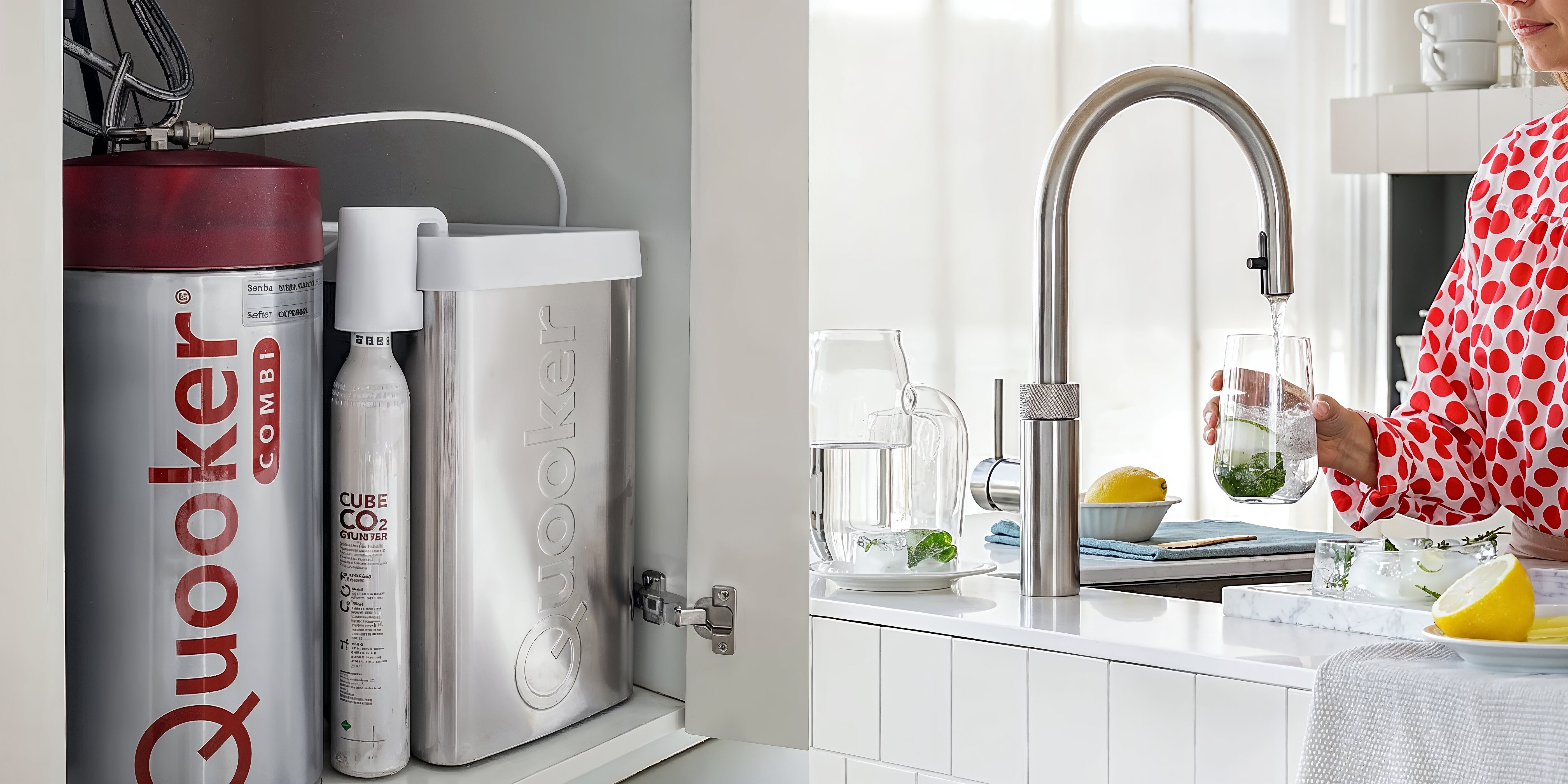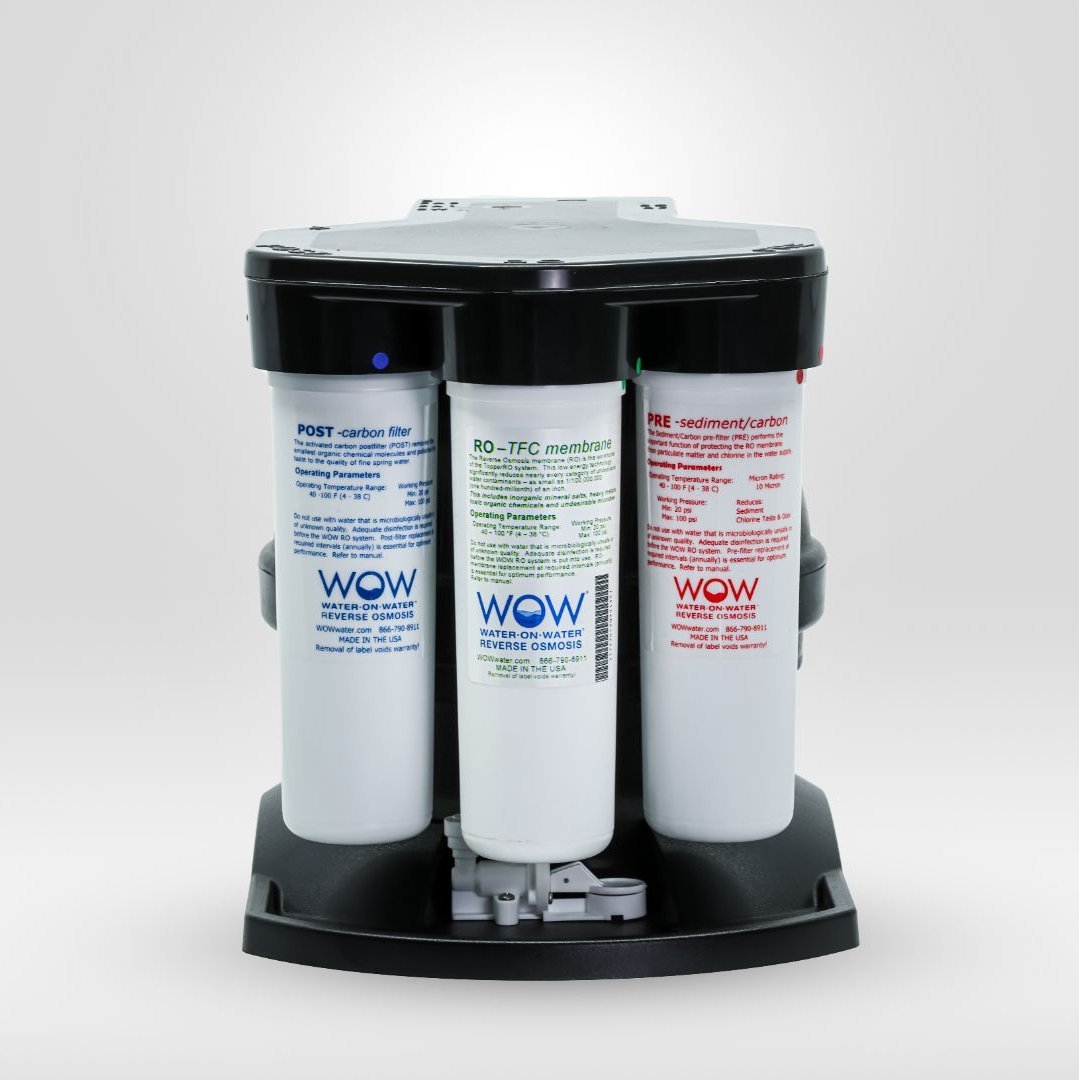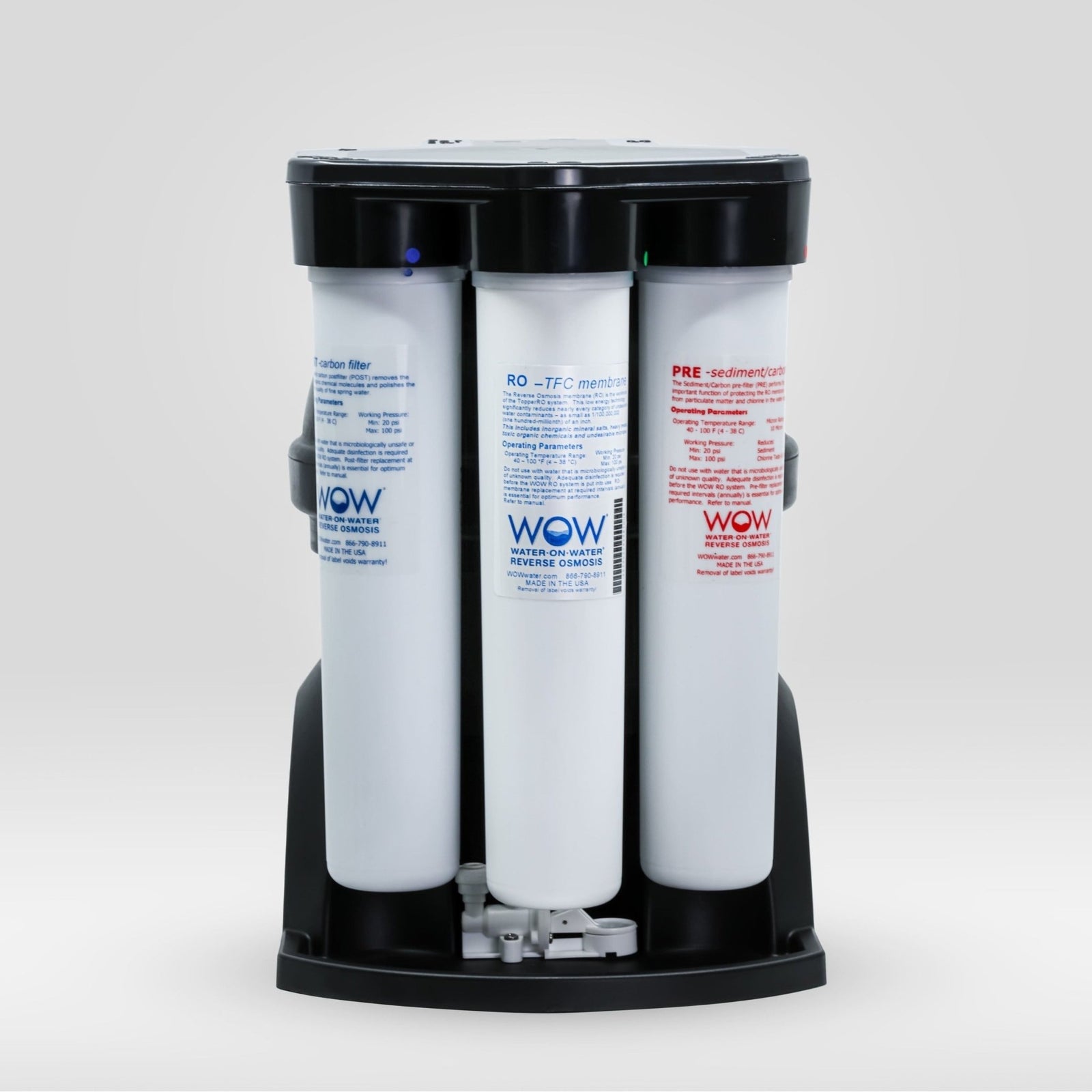Getting water at home that's the same quality as expensive bottled water is possible by installing an advanced water filtration system that uses reverse osmosis technology. These systems remove up to 99% of unwanted substances from tap water, including PFAS, pharmaceutical residues, heavy metals, and microplastics, giving you water that's comparable in purity to premium bottled water.
Why does bottled water taste different from tap water?
The difference in taste between bottled water and tap water is due to several factors. Tap water often contains chlorine for disinfection, which gives it a chemical aftertaste. It also contains dissolved solids such as calcium, magnesium, and other minerals that determine its hardness.
Bottled water usually undergoes a purification process to remove unwanted substances. The mineral composition is often adjusted for a neutral or slightly sweet taste. The absence of chlorine and other treatment chemicals also contributes to the fresher taste.
The Total Dissolved Solids (TDS) value plays a significant role. Tap water often has a TDS of 200-400 ppm, while premium bottled water is usually below 50 ppm. This lower dissolved solids concentration results in a purer, smoother flavor profile.
What is reverse osmosis and how does it work for home use?
Reverse osmosis is an advanced water filtration method in which water is forced under pressure through a semi-permeable membrane. This membrane has pores so small that only water molecules can pass through, while contaminants are retained.
For home use, a reverse osmosis system works in several steps:
Pre-filtration removes coarse particles and chlorine
The RO membrane filters molecules larger than 0.0001 microns
Post-filtration improves taste and smell
Optional remineralization adds healthy minerals
Modern systems like the ones we offer operate entirely without electricity and produce up to 500% less wastewater than traditional systems. The patented Water-on-Water storage tank ensures you always have at least 5 liters of clean drinking water available at home.
Which water filter systems provide the same quality as bottled water?
There are several options for bottled water, with reverse osmosis systems being the most effective. These remove up to 99% of all impurities, including PFAS, pharmaceutical residues, and microplastics.
System type Purification degree What is removed Maintenance
Reverse osmosis 95-99% Virtually all substances Replace filters annually
Active carbon filter 60-80% Chlorine, odor, taste Every 3-6 months
Multi-stage systems 85-95% Most contaminants Variable per stage
A standard filter like a Brita only improves the odor and taste but removes very few harmful substances from the water. For truly purifying bottled water at home, a complete home water filtration system with reverse osmosis technology is essential.
How do you test the quality of your filtered water at home?
The quality of filtered water can be tested in several ways. The most practical method is using a TDS meter, which measures total dissolved solids in parts per million (ppm).
Water quality test methods:
TDS meter: Measures dissolved solids (ideally below 50 ppm)
pH strips: Check acidity (ideally between 6.5-8.5)
Taste test: Compare with bottled water
Hardness Test: Measure Calcium and Magnesium
Our systems come with a handy water meter that allows you to easily monitor water quality. Water with a TDS value below 50 ppm is comparable to premium bottled water. You can also pay attention to clarity, odorlessness, and a fresh taste as indicators of good water quality.
What are the benefits of having your own water filter system?
A personal water filter system offers numerous benefits for your health, wallet, and the environment. You have constant access to tap water, improved to spring water quality, without having to buy plastic bottles.
The health benefits are significant: the removal of harmful substances such as PFAS, pharmaceutical residues, and heavy metals. Filtered water not only tastes better, but tea and coffee become more flavorful, and even flowers stay fresh longer.
You'll save considerably on your finances. Maintenance costs are less than €10 per month, a fraction of what you'd spend on bottled water. For a family drinking 2 liters of bottled water daily, this translates to an annual savings of over €500.
The environment also benefits: no more plastic waste, no more transporting heavy bottles, and modern systems produce minimal wastewater. All components, including filters, are fully recyclable, contributing to a sustainable lifestyle.
With a home water filter system, you can enjoy the luxury of premium water, straight from your tap. Whether you choose a stylish three-way tap or a separate pure water faucet, the system adapts to your kitchen and needs. For those who truly want the best: discover the possibilities of advanced filtration and taste the difference.
